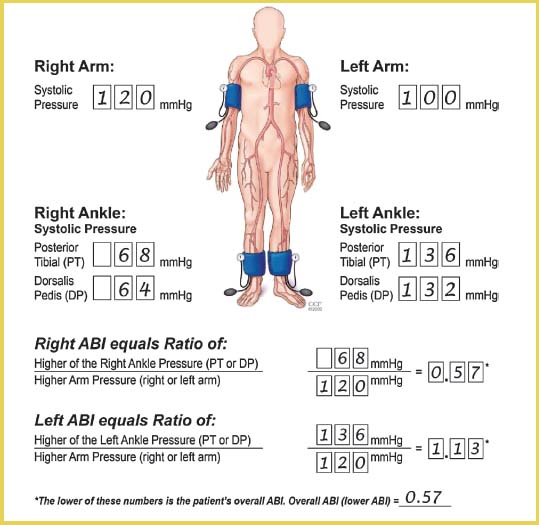Ankle brachial index (ABI)
/æŋkʌl/ /ɪndɛks/
1. [noun] overview Ankle-brachial index The ankle-brachial index test is a quick, noninvasive way to check for peripheral artery disease (PAD). The disease occurs when narrowed arteries reduce the blood flow to your limbs. PAD can cause leg pain when walking and increases the risk of heart attack and stroke. The ankle-brachial index test compares the blood pressure measured at your ankle with the blood pressure measured at your arm. A low ankle-brachial index number can indicate narrowing or blockage of the arteries in your legs. You may have ankle-brachial index testing before and immediately after walking on a treadmill. An exercise ankle-brachial index test can assess the severity of the narrowed arteries during walking. Why it's done The ankle-brachial index test is done to check for PAD — narrowed arteries that reduce blood flow, usually in your legs. Research indicates that PAD affects about 10 percent of people over age 55
Source: https://www.mayoclinic.org/tests-procedures/ankle-brachial-index/about/pac-20392934

Frequently Asked Questions
How does comparing blood pressure at the ankle with the arm relate to everyday foot and leg function?
This evaluation mirrors normal activities like walking. By assessing the pressure difference, it hints at how well your legs and feet are getting the blood flow they need during daily movements.
What are some common misconceptions about using arm and ankle pressure measurements for foot health?
Some believe the test only identifies foot pain, but it actually examines overall leg circulation. This broader assessment reflects how blood flow supports proper foot movement during routine activities.